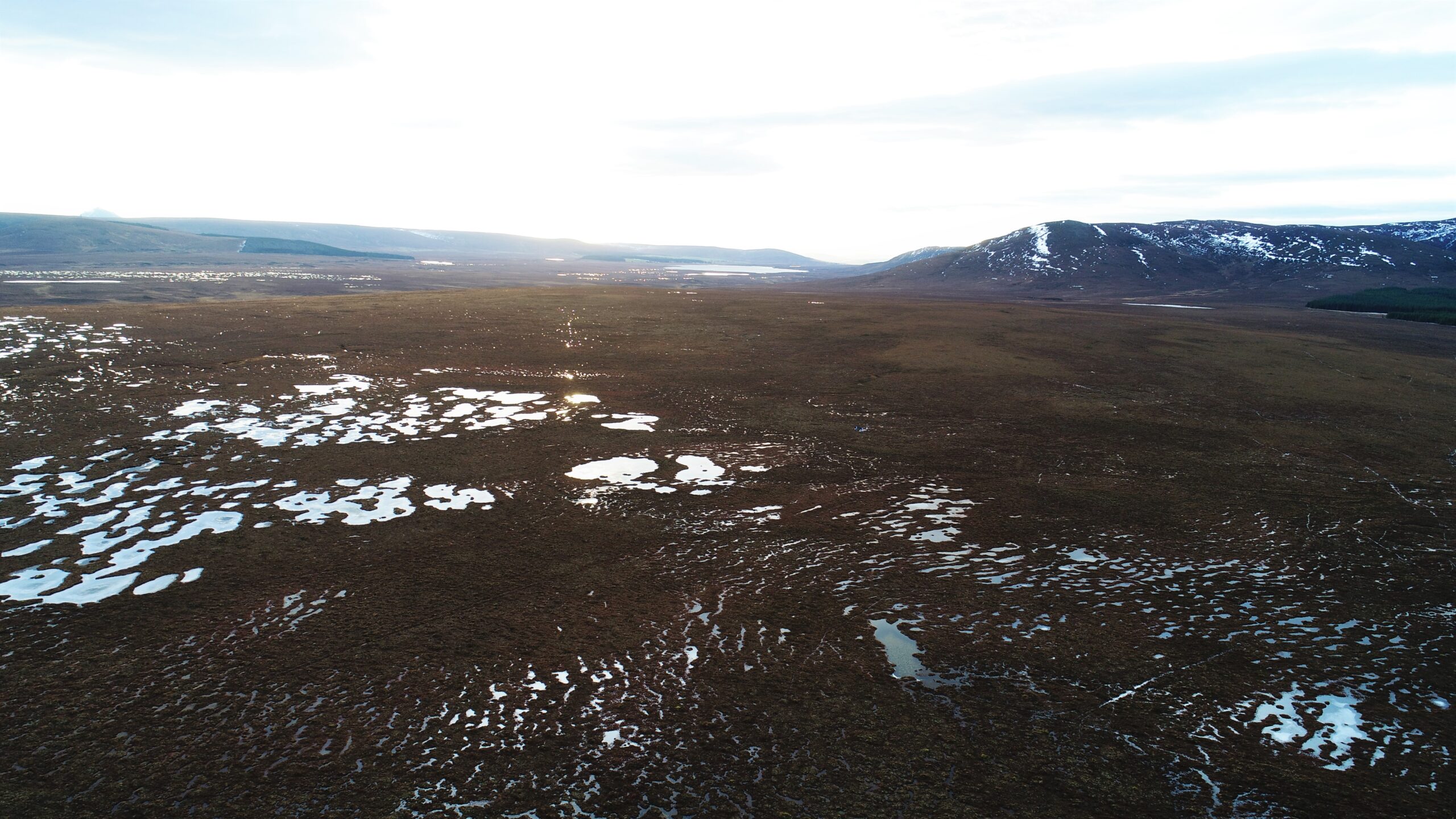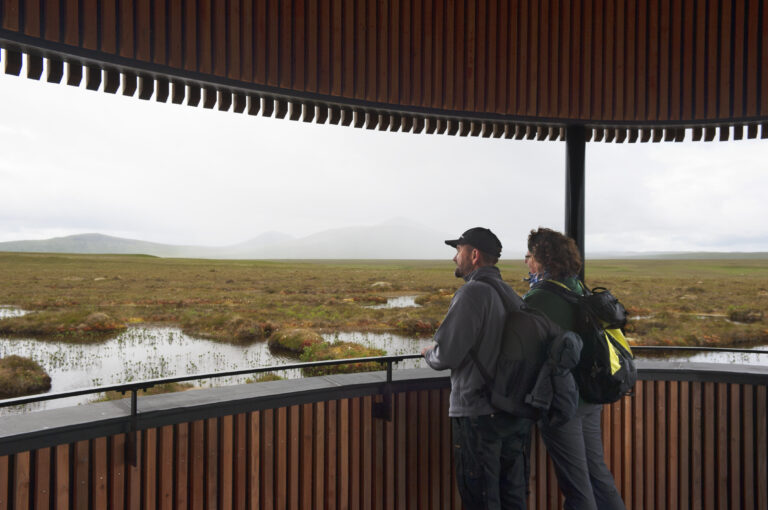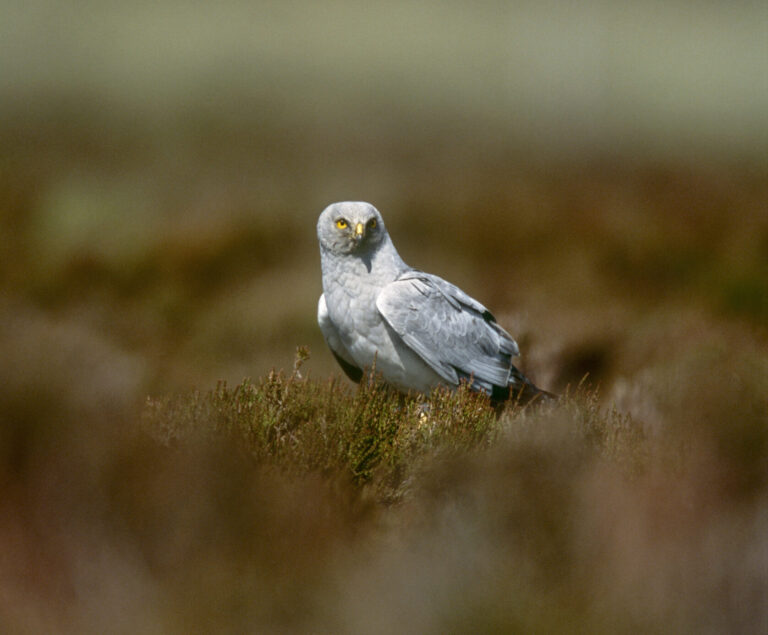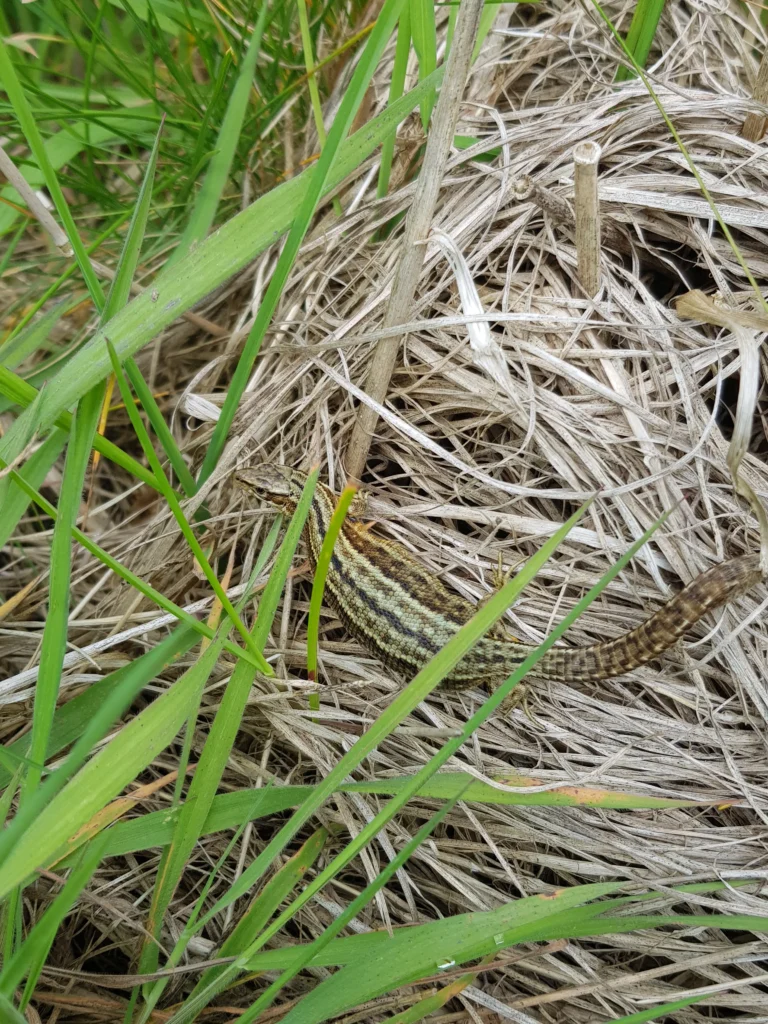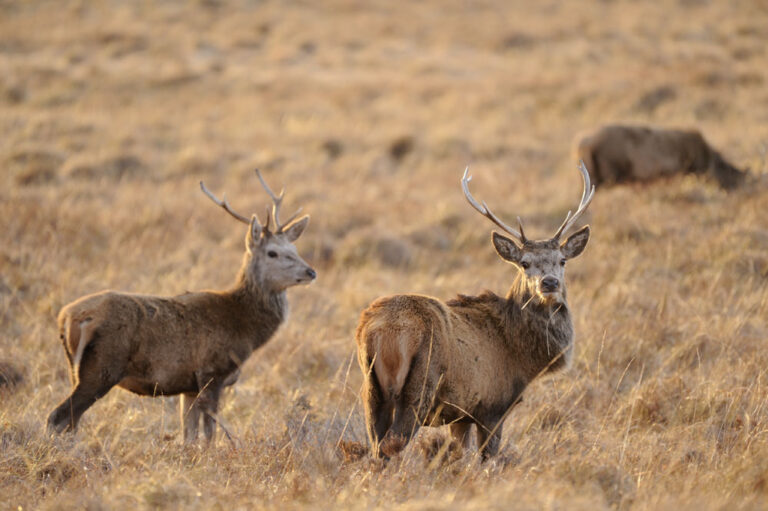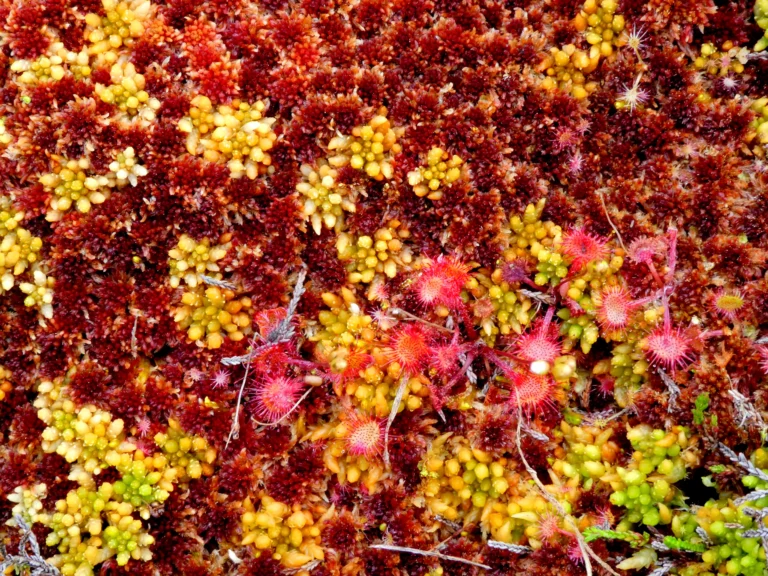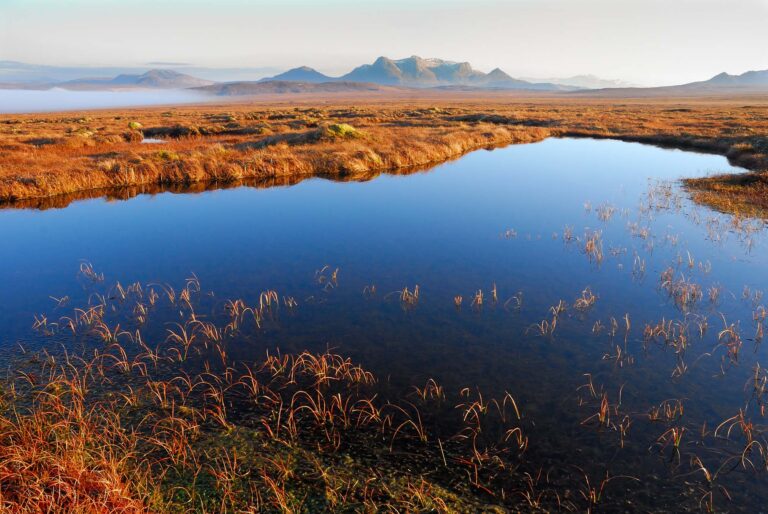

Dùthaich nam boglaichean
What are peatlands?
Peatlands are areas of land with naturally accumulating layers of peat. They are wet, acidic environments. The water-logged conditions mean that there is little oxygen for microbes and fungi which normally decompose dead organic matter. Therefore, Sphangum mosses and other peatland plants do not fully decay when they die, instead forming a carbon-rich soil known as peat. Peat forms very slowly, but over thousands of years it can become very deep, storing huge quantities of carbon.
Peatlands are low in nutrients, so are not known for their high levels of biodiversity compared to other ecosystems. However, the species which do inhabit peatlands tend to be highly specialised to this ecosystem type. Peatlands often have unique amalgams of species which are not found elsewhere.
Sphagnum mosses are crucial parts of peatland ecosystems in cooler climates. Sphagnum mosses can hold large quantities of water in their cells, and release hydrogen ions which maintain acidity. This creates the ideal conditions for peat formation.
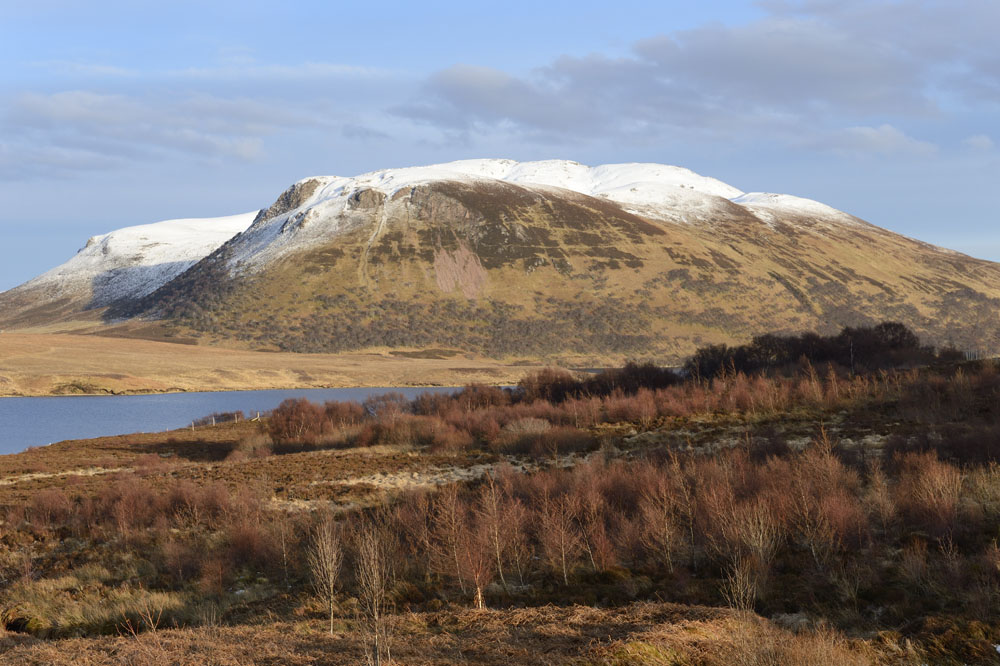
Why are peatlands so important?
Peatlands have a vital role in mitigating the threat of climate change. This is because of their ability to capture and store carbon dioxide.
All green plants absorb carbon dioxide from the atmosphere. However, when the plants die, the carbon is released back into the atmosphere – unless the plant material is preserved in some way.
That’s why peat bogs are so important as a defence against climate change. Forests can store carbon more quickly than peatland, but most of it is released when the trees rot away or are burnt as fuel. The moss and other plants do not fully decay so the bogs are able to store carbon for thousands of years.
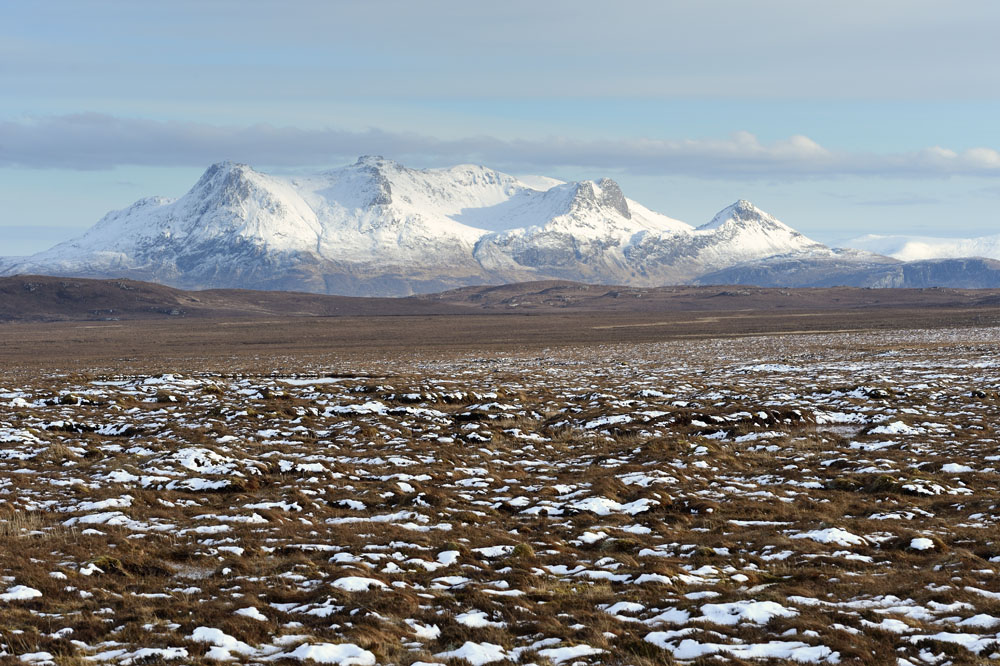
Why do peatlands need to be protected?
While pristine peatlands are fantastic habitat and excellent at sequestering carbon from the atmosphere, damaged peatlands release their enormous stores of carbon, accelerating climate change. Protecting peatlands from further damage and restoring peatlands which have been degraded are both vital steps in reducing carbon emissions. Find out more about peatland restoration in the Flow Country, here!

